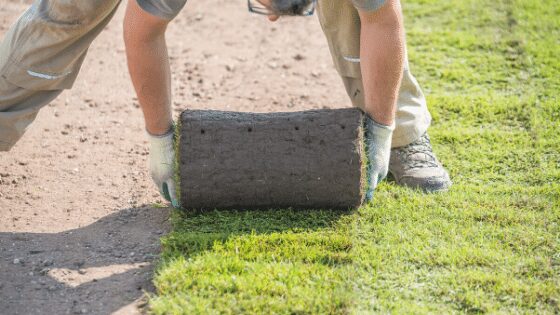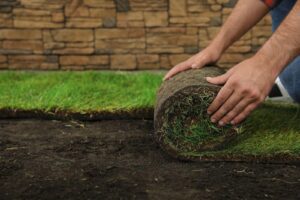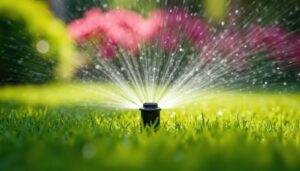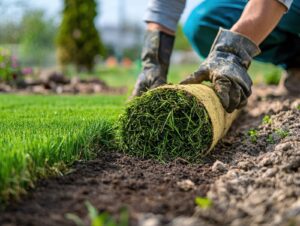Looking outside, it seems as if winter is here to say—for now. Still, many homeowners may wonder about laying down sod and when it’s too late. Good news. In today’s blog post, we’ll discuss this topic, so stay tuned.
Season Period for Laying Sod
In Utah, you can install sod year-round; however, to ensure a healthy and green lawn, the best time is summer and fall, which allows the sod to take root for the upcoming winter. Late fall and winter is not the best time, not that the sod won’t survive, but because of water restrictions and unpredictable temps and moisture.
Read further to find out the best time to lay sod.
Best Time for Laying Sod
New sod requires regular watering to ensure a successful outcome. City water is typically shut off in late fall, so to water, you’d need to use culinary water from your outside spigot. That means hooking your hose up and watching the weather to see when it snows and whether there’s enough moisture.
New construction doesn’t stop once winter hits, but installing sod should be delayed until spring, if at all possible, so you can water when needed and for how long required. It’s for this reason that it’s best to lay sod in late summer/early fall, with late August to early October being the optimal time; however, that doesn’t mean you can’t do it in spring for a summer lawn.
If you’re moving into a new home and would like to install sod, consider waiting until at least early April when the weather warms. We still may get some hit and miss snowstorms, but at least the temps are warm enough to thaw the ground. Avoid laying sod in extreme summer temps and dry conditions since that too can cause problems, especially in times of drought.
Maintenance for New Sod
Keep in mind, new sod takes more maintenance than established sod, so when you do install it, ensure you have the time devoted to maintaining it. Typically, you should be watering several times a day, for at least a few weeks, but wintertime is tricky. There could be several snowstorms to where you don’t need to water, but once you have a dry period, you have to figure out a schedule to ensure your new sod is still getting enough water.
Schedule watering at mid-day, so the sod has time to absorb it, well before the water freezes at night. If the air temperature is above 40 degrees and the soil isn’t frozen, you can then water new sod. Aim for about .25 inches of water, whether that comes from snow or watering.
If you work and can’t be home during the day, you might think twice about installing sod in the winter or early spring. The worst time to lay the sod is when the ground is frozen, so if you plan to lay this winter, ensure the ground is thawed, and you have proper soil preparation to improve sod growth.
It’s also important to keep your new sod free of weeds when the ground has thawed, so they don’t have time to seed out and establish roots.
Call Monarch Sod to Learn More
If you would like to learn more about sod installation and delivery, reach out to Monarch Sod. We are available to answer your questions and can schedule a time to come out and either deliver sod or deliver and install it if you wish. Note: We don’t deliver or install sod from November-March.












